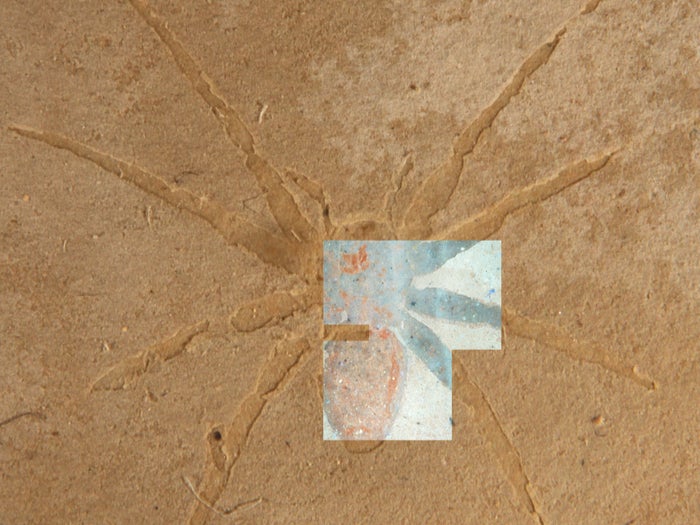Scientists discover why glowing spider fossils are exquisitely preserved
American researchers examine geologic formation near Aix-en-Provence to reveal secrets, finds Jane Dalton


Scientists have revealed why a collection of glowing spider fossils in France are so exquisitely preserved.
As a lockdown project, a group of American researchers examined a geologic formation near Aix-en-Provence that is particularly known among geologists for its fossils from the Oligocene Period, 23-34 million years ago.
Arthropods, animals with exoskeletons – external skeletons – such as spiders, are rarely fossilised, so their abundance at Aix-en-Provence is described as remarkable.
The scientists discovered thousands of microalgae all around the fossils and coating the fossils themselves, causing a chemical change that preserved them.
Their study in the journal Communications Earth & Environment, says an “extracellular substance these microalgae, called diatoms, are known to produce would have protected the spiders from oxygen and promoted sulfurisation”.
Lead author Alison Olcott, associate professor of geology at the University of Kansas, and her co-authors Matthew Downen, Paul Selden and James Schiffbauer, sought to discover how the fossils were so well preserved.
“Matt was working on describing these fossils, and we decided – more or less on a whim – to stick them under the fluorescent microscope to see what happened,” she said.
“To our surprise they glowed, and so we got very interested in what the chemistry of these fossils was that made them glow.
“So we started exploring the chemistry and discovered the fossils contain a black polymer made of carbon and sulphur that, under the microscope, looks like the tar you see on the road. We also noticed there were just thousands and thousands and thousands of microalgae all around the fossils and coating the fossils themselves.
“These microalgae make the sticky, viscous gloop – that’s how they stick together,” she said.
“I honestly think this study is partially a result of pandemic science,” she said.
“My lab was still closed; I was two months into my leg of 18 months at home with kids all the time, and so I had to change how I was doing science.
“I spent a lot of time with these images and these chemical maps and sort of explored them in a way that probably wouldn’t have happened if all the labs were open and we could have gone in and done more conventional work.”




Join our commenting forum
Join thought-provoking conversations, follow other Independent readers and see their replies
0Comments